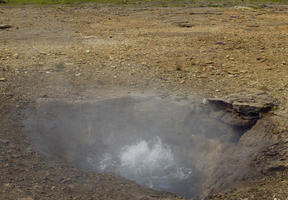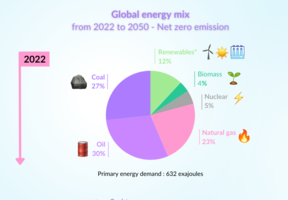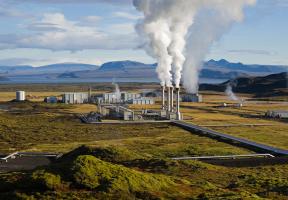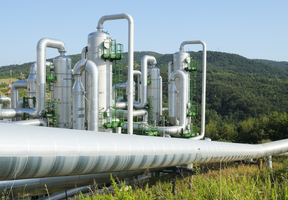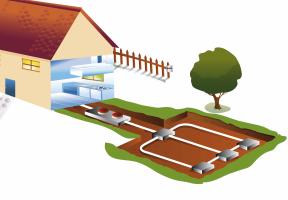Geothermal Energy: New Technologies
10 min read
Why not “create” hot water beneath the surface by injecting cold water into dry, hot rock formations and then recovering the water once it has been heated through contact with them? The use of end-of-life, or depleted, oil fields is also being studied.
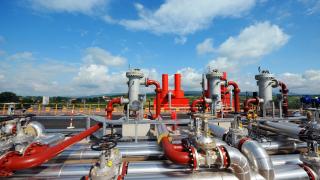
© F.FLORIN - The pilot boreholes in Soultz-sous-Forêts tap the heat of deep rock formations.
Engineered Geothermal Systems
Naturally hot groundwater is not the only source of energy. In the last few years, technology has been developed that creates energy by injecting water into “dry” — low-permeability — rocks, such as fractured granite. Terms used to refer to this include enhanced geothermal systems, hot fractured rock and hot dry rock.
The rocks chosen for this purpose are found deep underground in high-temperature environments with a strong . Two wells are drilled about 100 meters apart. Water is injected at high pressure into one of the wells, expanding or creating a network of fractures in the rock. The water is extracted via the second well after it has been heated by its passage through the hot rock formation. Once the water is able to circulate through the network of fractures, a constant stream of cold water is injected into the rock and hot water is recovered.
Case Study: Soultz-sous-Forêts, France
This technology has been tested since 2002 in Soultz-sous-Forêts, eastern France, with boreholes drilled 5,000 meters into a granite massif. In 1997, after ten years of testing and test boring, water circulation was achieved at low pump for four months between the two deep wells, at a flow rate of 25 kilograms per second and a temperature of above 140°C, without any water loss or . This world first meant a green light for the continuation of the project. A pilot plant was developed, which involved the of three 5,000-meter-deep wells. In 2008, a power plant with capacity of 1.5 MW was commissioned, providing enough energy to supply a small city.
A commercial EGS plant is in operation in Landau, in the North German Plain and Upper Rhine, and a project is being finalized in Australia, near Habanero in the Copper Basin. Four other projects are at a very advanced stage in the United States. Production costs could be reduced by optimizing reservoir stimulation and by improving drilling technology, the efficiency of binary cycle power plants and the reliability of submersible pumps. This would then allow this technology to be extended to large areas of land surfaces.
Using End-of-Life Oil Fields
Geothermal energy could also mean a new lease of life for depleted oil fields. It could use the water associated with oil reservoirs in sedimentary basins, which can be very hot.
Research is also being carried out into longer-term development plans, with a timescale up to 2030. One example involves very high temperature reservoirs (over 400°C), where the water is "supercritical", neither liquid nor steam. Boreholes could be drilled into these reservoirs to deliver ten times as much power as conventional wells. The potential development of submarine geothermal resources is another area currently being investigated.


